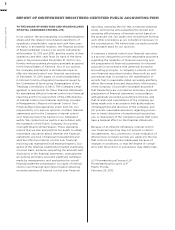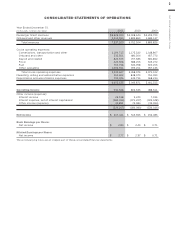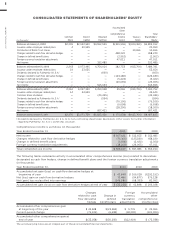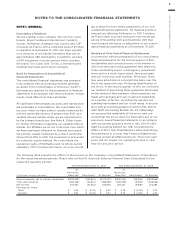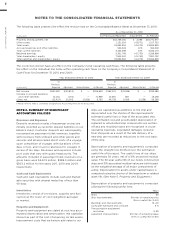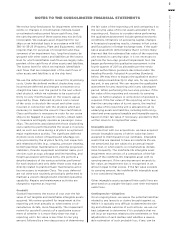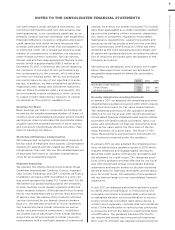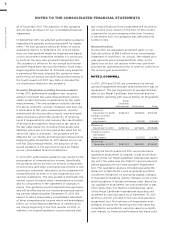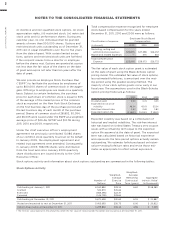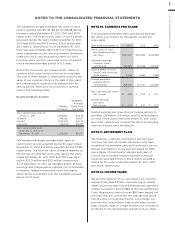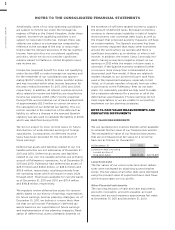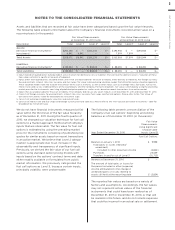Royal Caribbean Cruise Lines 2011 Annual Report Download - page 79
Download and view the complete annual report
Please find page 79 of the 2011 Royal Caribbean Cruise Lines annual report below. You can navigate through the pages in the report by either clicking on the pages listed below, or by using the keyword search tool below to find specific information within the annual report.
NOTES TO THE CONSOLIDATED FINANCIAL STATEMENTS
ROYAL CARIBBEAN CRUISES LTD. 75
non-performance under derivative instruments, our
revolving credit facilities and new ship progress pay-
ment guarantees, is not considered significant, as we
primarily conduct business with large, well-established
financial institutions, insurance companies and export
credit agencies with which we have long-term rela-
tionships and which have credit risks acceptable to us
or where the credit risk is spread out among a large
number of counterparties. In addition, our exposure
under foreign currency contracts, fuel call options,
interest rate and fuel swap agreements that are in-the-
money, which is approximately $135.5 million as of
December 31, 2011, is limited to the cost of replacing
the contracts in the event of non-performance by
the counterparties to the contract, all of which are
currently our lending banks. We do not anticipate
non-performance by any of our significant counter-
parties. In addition, we have established guidelines
regarding credit ratings and instrument maturities
that we follow to maintain safety and liquidity. We
do not normally require collateral or other security
to support credit relationships; however, in certain
circumstances this option is available to us.
Earnings Per Share
Basic earnings per share is computed by dividing net
income by the weighted-average number of shares of
common stock outstanding during each period. Diluted
earnings per share incorporates the incremental shares
issuable upon the assumed exercise of stock options
and conversion of potentially dilutive securities. (See
Note 10. Earnings Per Share.)
Stock-Based Employee Compensation
We measure and recognize compensation expense at
the fair value of employee stock awards. Compensation
expense for awards and the related tax effects are
recognized as they vest. We use the estimated amount
of expected forfeitures to calculate compensation
costs for all outstanding awards.
Segment Reporting
We operate five wholly-owned cruise brands, Royal
Caribbean International, Celebrity Cruises, Azamara
Club Cruises, Pullmantur and CDF Croisières de France.
In addition, we have a 50% investment in a joint ven-
ture which operates the brand TUI Cruises with TUI AG.
We believe our global brands possess the versatility
to enter multiple cruise market segments within the
cruise vacation industry. Although each of our brands
has its own marketing style as well as ships and crews
of various sizes, the nature of the products sold and
services delivered by our brands share a common
base (i.e., the sale and provision of cruise vacations).
Our brands also have similar itineraries as well as
similar cost and revenue components. In addition,
our brands source passengers from similar markets
around the world and operate in similar economic
environments with a significant degree of commercial
overlap. As a result, our brands (including TUI Cruises)
have been aggregated as a single reportable segment
based on the similarity of their economic characteris-
tics, types of consumers, regulatory environment,
maintenance requirements, supporting systems and
processes as well as products and services provided.
Our Chairman and Chief Executive Officer has been
identified as the chief operating decision-maker and
all significant operating decisions including the alloca-
tion of resources are based upon the analyses of the
Company as a whole.
Information by geographic area is shown in the table
below. Passenger ticket revenues are attributed to
geographic areas based on where the reservation
originates.
Passenger ticket revenues:
United States
All other countries
Recently Adopted Accounting Standards
In January 2011, we adopted the remaining provisions
of authoritative guidance issued in 2010 which requires
enhanced disclosures for fair value measurements.
The remaining provisions of this guidance became
effective for our fiscal year 2011 interim and annual
consolidated financial statements and require entities
to present information about purchases, sales, issu-
ances and settlements of financial instruments mea-
sured at fair value within the third level of the fair
value hierarchy on a gross basis. See Note 13. Fair
Value Measurements and Derivative Instruments for
our disclosures required under this guidance.
In January 2011, we also adopted the remaining provi-
sions of authoritative guidance issued in 2010 which
requires enhanced and disaggregated disclosures
about the credit quality of financing receivables and
the allowance for credit losses. The remaining provi-
sions of this guidance became effective for our fiscal
year 2011 interim and annual consolidated financial
statements and require entities to disclose reporting
period activity for financing receivables and the allow-
ance for credit losses. The adoption of this guidance
did not have an impact on our consolidated financial
statements.
In July 2011, we adopted authoritative guidance issued
to clarify when a modification or restructuring of a
receivable constitutes a troubled debt restructuring.
In evaluating whether such a modification or restruc-
turing constitutes a troubled debt restructuring, a
creditor must separately conclude that two conditions
exist: (1) the modification or restructuring constitutes
a concession and (2) the debtor is experiencing finan-
cial difficulties. The guidance became effective for
our interim and annual reporting periods beginning
after June 15, 2011 and was applied retrospectively for



